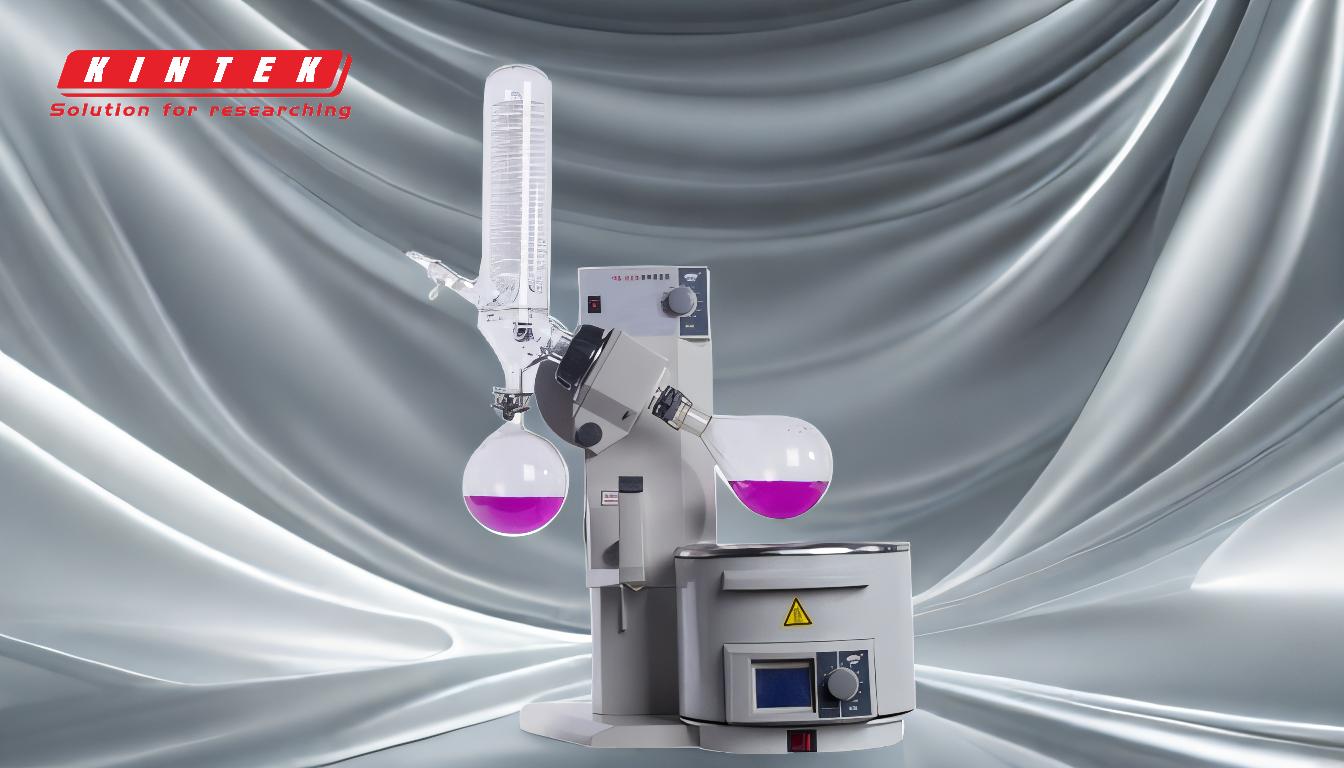A vacuum evaporator operates by reducing the pressure above a liquid, which lowers its boiling point, enabling evaporation at lower temperatures. This process is particularly useful for separating water from contaminants in wastewater treatment or for concentrating samples in laboratories. The system typically involves heating the liquid in a boiling chamber under vacuum conditions, causing water to vaporize while leaving behind high-boiling-point contaminants. The vapor is then condensed back into liquid form using a heat exchanger. Advanced systems may incorporate additional features like vortex generation, vacuum pumps, and cold traps to enhance efficiency and prevent sample loss or contamination.
Key Points Explained:

-
Lowering Pressure to Reduce Boiling Point:
- Vacuum evaporators function by creating a low-pressure environment above the liquid. This reduction in pressure lowers the boiling point of the liquid, allowing it to evaporate at temperatures significantly lower than its normal boiling point. This is particularly beneficial for heat-sensitive substances or solvents like DMSO, which have high boiling points under normal conditions.
-
Heating and Vaporization:
- The liquid is heated in a boiling chamber, which accelerates the vaporization process. Under vacuum conditions, the liquid boils at a lower temperature, ensuring efficient separation of water or solvents from contaminants or solutes. This step is crucial in applications like wastewater treatment, where contaminants are left behind as the water evaporates.
-
Condensation and Collection:
- After vaporization, the vapor is directed to a heat exchanger or condenser, where it is cooled and condensed back into liquid form. This step ensures the recovery of the evaporated liquid, which can then be reused or disposed of safely. In advanced systems, a cold trap is often used to collect solvent gases, preventing contamination and loss.
-
Vortex Generation (in Advanced Systems):
- Some vacuum evaporators use vortex generation to increase the surface area of the liquid, promoting faster evaporation. By swirling sample tubes, a vortex is created, which enhances vaporization rates. However, this method may generate insufficient g force to prevent bumping, leading to potential sample loss or cross-contamination in less advanced systems.
-
Role of Vacuum Pumps and Heaters:
- Advanced vacuum evaporators incorporate vacuum pumps and heaters to optimize the evaporation process. The vacuum pump is critical for maintaining the low-pressure environment, while heaters ensure consistent and controlled heating. These components work together to achieve precise control over the evaporation process, making it suitable for a wide range of applications.
-
Applications in Wastewater Treatment:
- In wastewater treatment, vacuum evaporation is used to separate water from contaminants with high boiling points. The system operates under vacuum conditions, allowing water to boil at lower temperatures, leaving behind contaminants in the boiling chamber. The condensed water is then collected, making this method effective for purifying wastewater.
-
Advantages of Vacuum Evaporation:
- The ability to operate at lower temperatures protects thermolabile substances from degradation.
- Rapid adjustment of vacuum levels allows for precise control over the evaporation process.
- The method is versatile, applicable to both laboratory-scale sample concentration and large-scale wastewater treatment.
-
Challenges and Considerations:
- Proper maintenance of the vacuum pump is essential, as it is a critical component often overlooked.
- Advanced systems must address issues like sample loss and cross-contamination, especially in vortex-based evaporators.
- The choice of materials and design must ensure compatibility with the solvents or contaminants being processed.
By understanding these key points, a purchaser can make informed decisions about selecting and operating a vacuum evaporator tailored to their specific needs.
Summary Table:
| Key Aspect | Description |
|---|---|
| Lowering Pressure | Reduces boiling point, enabling evaporation at lower temperatures. |
| Heating and Vaporization | Liquid heated under vacuum for efficient separation of water and contaminants. |
| Condensation and Collection | Vapor condensed back into liquid using a heat exchanger or cold trap. |
| Vortex Generation | Increases surface area for faster evaporation, but may risk sample loss. |
| Vacuum Pumps and Heaters | Maintain low pressure and controlled heating for precise evaporation control. |
| Applications | Used in wastewater treatment and lab sample concentration. |
| Advantages | Operates at lower temperatures, versatile, and protects thermolabile substances. |
| Challenges | Requires proper maintenance and material compatibility. |
Discover how a vacuum evaporator can optimize your lab or wastewater treatment—contact us today for expert advice!
















